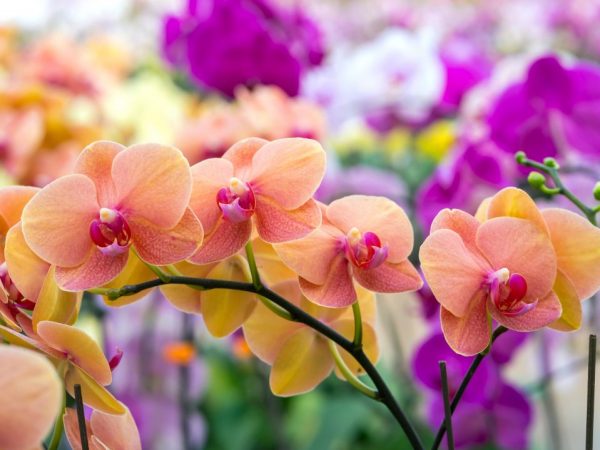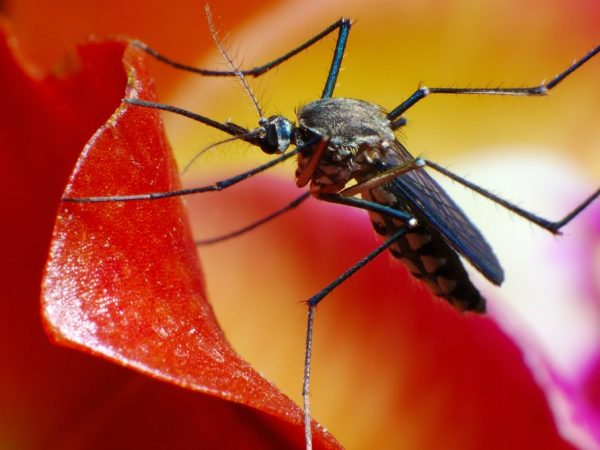How to deal with thrips on orchids
Thrips on orchids are dangerous not only for domestic plants, but also for agricultural ones - in this case, it is impossible to get rid of them.

How to deal with thrips on orchids
Description of thrips
Orchid thrips are also called bubbly, they live on all continents of the world. In total, there are more than 5000 species of thrips, 300 of which live in Europe. Not all species are parasites. Pests lay their eggs in plant tissue using a sting, while the rest lay them on the surface of the plant.
The body length of thrips is up to 1 mm. Pests have wings. The larvae of thrips are of the same size, they are mobile. The parasites suck out the sap of the plant with a sting. Any part of the orchid can be affected.
On the surface of the leaf, it is determined how and by whom it was damaged - a void remains from the bite, and soon this place ceases to participate in photosynthesis and dies. If the thrips has sucked the juice from a bud or flower, then these places are deformed, become unattractive. These parasites are carriers of various viruses.
Types of thrips
Most often, these types of pests are found on orchids. They look different:
- dracaenous - striped parasites (black and white), reaching a size of 1.3 mm, white larvae, most often infect foliage;
- Californian - the length of the pest is up to 2 mm, the color is yellow, dark yellow. The color of the larvae differs from the usual ones - they are also yellow. Favorable habitat - 20-30 ° C. Places of defeat - a flower, occasionally foliage. One of the most dangerous pests, from which the leaves have a bronze tint;
- black infect leaves, occasionally flowers. Length - up to 1.5 mm. The body color of the insect is brown, with a light back. Found on the inside of the plant leaf;
- tobacco - up to 1.3 mm, dark brown, sometimes black, white or yellow larvae;
- American - a rare species of parasite that affects the Miltonium variety.

The appearance of thrips can be different
Symptoms of defeat
Symptoms of thrips on an orchid resemble those of a spider mite plant, but much worse. Insect bites (punctures) on the flower are filled with air, after which the foliage changes color to silver.
The punctures themselves turn black over time, which means that a fungus has appeared. The foliage affected by the pest does not participate in photosynthesis, and dries up over time.
How to deal with thrips
There are several ways to fight thrips on an orchid. It is important to closely monitor the condition of the leaves, to care for them. These pests most often feed on sap on the inside of the foliage, so it is important to systematically inspect the flowerpot. If symptoms of a lesion have been noticed, the top layer of the substrate is replaced for prophylaxis.
The less moisture in the air, the greater the likelihood of insects. That is why growers carefully examine the flower in the summer, or in the winter, when the premises are heated by heating.
In the fight against thrips on an orchid, the flower is isolated from other plants and washed with warm water. This action will help reduce the number of bugs.All parts of the flower that have been prone to punctures by the parasite are removed and cut off by the growers.
Florists advise using adhesive tapes that are attached to the sheets. The main rule is that it should not be yellow, since these insects do not like this color.
Folk remedies
To combat insects, stores sell special products - sprays for smooth foliage. An excellent remedy is a soap solution (for 15 grams of 1 liter of water), in some cases it helps to get rid of parasites completely.
Another way is garlic infusion. Take five cloves of garlic (finely chopped) in half a liter of boiling water. After the mixture has been infused for 4 hours, it is filtered, and only then lubricate problem areas.
Olive oil is a great help to fight. Two tablespoons of oil are diluted in 1 liter of water, after which the flower is sprayed with the solution.

You can fight thrips on an orchid with folk and chemical means
Chemicals
In flower shops, they purchase special products in the form of insect sprays. Their disadvantage is that they clog the pores of the foliage, which makes it difficult for the flower to breathe. This leads to the death of the leaves, and in some cases, the death of the plant.
You should carefully read the instructions for using the products so as not to harm the plant. Florists often use an additional plastic bag, in which they put the damaged flower after spraying for 2-3 hours.
To get rid of parasites, granules or sticks are also used, which are inserted into the ground to the roots. Thanks to them, the root system absorbs sap toxic to insects. This works well for hard-to-reach affected areas.
Conclusion
In order to completely get rid of such a serious pest, a number of treatments are carried out in order to permanently overcome the parasite. Florists use both folk remedies in the fight and chemical preparations.


